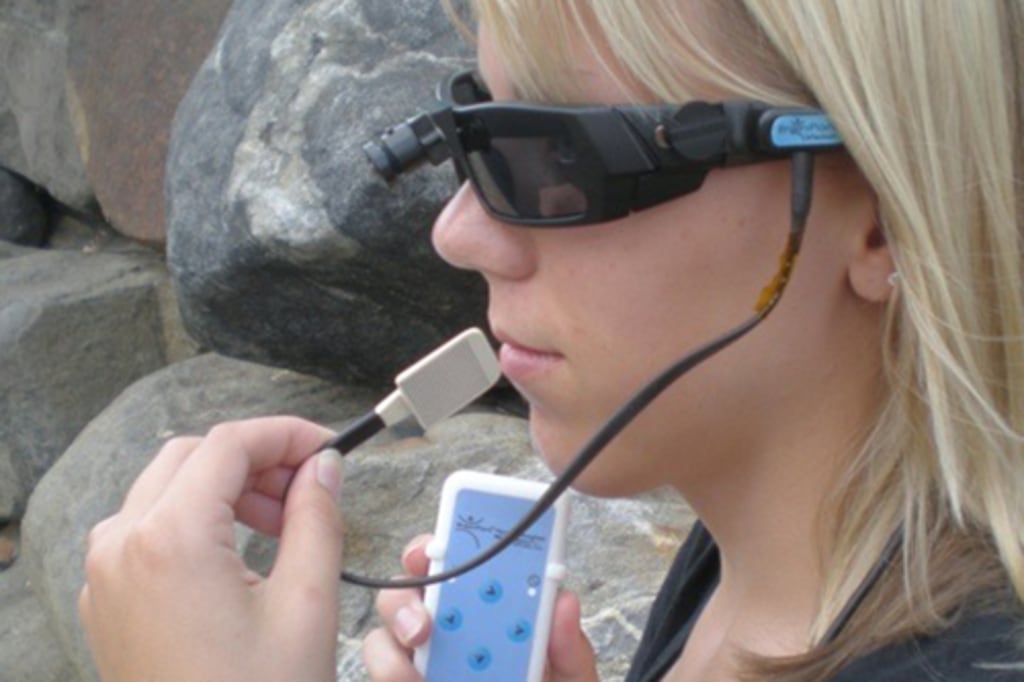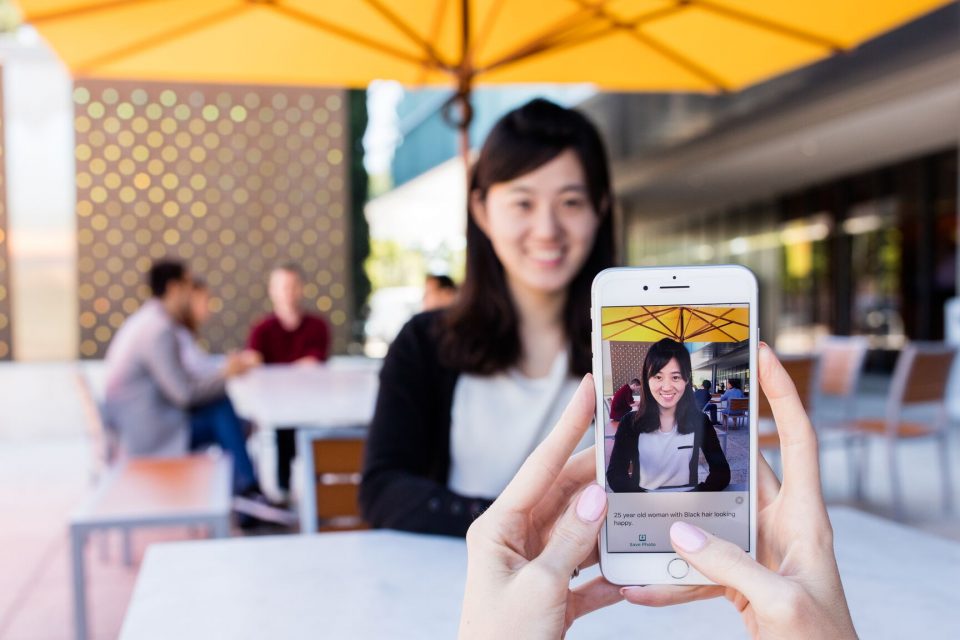Smart Glasses for the Visually Impaired: Breakthroughs in Vision Support
Discover Ingenious Tools Developed for the Visually Damaged
The advancement of innovative tools for the aesthetically damaged represents a significant improvement in availability and independence. Technologies such as clever glasses with AI capacities and mobile applications created to supply acoustic summaries are improving day-to-day experiences for individuals.
Smart Glasses for Navigation

Smart glasses designed for navigation are transforming the way aesthetically impaired individuals connect with their atmosphere. These innovative tools utilize a mix of camera modern technology, man-made knowledge, and auditory feedback to offer real-time details concerning surroundings. By using challenge discovery systems, wise glasses can notify customers to potential dangers, making it possible for much safer movement in both familiar and unfamiliar settings.
The integration of GPS modern technology better boosts navigating abilities, enabling users to receive acoustic instructions as they relocate. This hands-free strategy not only cultivates independence yet additionally empowers visually impaired individuals to browse urban landscapes with boosted self-confidence. Furthermore, numerous smart glasses are equipped with features that determine sites and street signs, offering contextual info that enhances the user experience.
Furthermore, the growth of these gadgets is consistently progressing, with firms working to improve the accuracy of object acknowledgment and expand the variety of navigational attributes. As smart glasses end up being a lot more obtainable and affordable, they hold the potential to dramatically change day-to-day life for aesthetically damaged customers. Ultimately, these cutting-edge tools stand for a crucial action towards inclusivity, offering boosted wheelchair and a higher sense of autonomy for people browsing the world around them.

Mobile Apps for Daily Living
Exactly how can mobile applications enhance the every day lives of aesthetically impaired individuals? Mobile applications are revolutionizing the means visually impaired users browse their environments, take care of day-to-day tasks, and access details. These applications supply essential support via numerous functionalities, fostering independence and improving top quality of life.
A number of cutting-edge mobile apps are developed especially for day-to-day living. For circumstances, applications like Be My Eyes link visually damaged individuals with sighted volunteers using video telephone calls, permitting them to obtain real-time support with tasks such as reading labels or navigating unknown spaces. Likewise, Seeing AI, developed by Microsoft, makes use of artificial intelligence to explain environments, reviewed text, and determine objects, effectively changing a mobile phone right into an effective device for day-to-day assistance.
Additionally, navigating applications tailored for the visually impaired, such as Aira and BlindSquare, use audio-based directions and environmental info, making it possible for customers to traverse their surroundings safely and confidently. Beyond navigation and instant assistance, mobile applications likewise sustain company and task management, with features that help individuals set suggestions, develop to-do listings, and track appointments. In summary, mobile applications work as crucial sources, encouraging aesthetically impaired individuals to lead even more independent and fulfilling lives.
Wearable Technologies for Aid
Empowerment with modern technology is significantly noticeable in the realm of wearable gadgets created to aid visually damaged people. These cutting-edge tools incorporate seamlessly into day-to-day live, improving navigation and supplying necessary comments to individuals. Wise glasses equipped with electronic cameras can review and acknowledge faces message out loud, enabling customers to interact even more with confidence in social and professional settings.
One more noteworthy innovation is making use of haptic feedback systems in wearable gadgets. These systems make use of vibrations or other responsive signals to communicate info regarding the customer's environment, such as challenges or adjustments in terrain, boosting movement and safety and security. Wearable innovations additionally include wristbands that connect to mobile phones, informing customers to notifications via refined vibrations, therefore improving connection without dependence on aesthetic cues.
As these modern technologies remain to advance, they are not just enhancing self-reliance for visually damaged individuals however likewise cultivating a better feeling of incorporation in culture. By linking the void between difficulties encountered in day-to-day living and the capacity for freedom, wearable technologies work as critical devices in the mission for equal rights and empowerment for those with visual impairments.
Audio Description Devices
Audio summary devices play an important duty in boosting ease of access for aesthetically impaired imp source people, giving them with the ability to involve with visual media. Mobility aids for visually impaired users. These devices supply narrated descriptions of vital aesthetic components in films, tv programs, and live efficiencies, guaranteeing that users can completely comprehend the context and feelings shared with visuals
Audio description can be integrated into different systems, including streaming services, cinema screenings, and live movie theater. Several preferred streaming services now consist of audio summary as an availability feature, permitting audiences to pick it quickly. Along with conventional media, specialized apps likewise exist, supplying audio descriptions for art exhibits, galleries, and various other cultural occasions.
The effectiveness of audio summary pivots on the ability of the narrators, that must convey aesthetic information succinctly without detracting from the initial audio. Advancements in this field are additionally leading the way for even more personalized experiences, where individuals can readjust the level of detail and pacing according to their choices.
Braille Innovations and Tools
Braille tools and innovations have actually dramatically changed the means aesthetically impaired individuals interact with message and information. Modern improvements have actually led to the growth of functional tools that boost proficiency and self-reliance amongst users.
Moreover, mobile Braille notetakers integrate traditional Braille input with modern performances, helping with note-taking, organizing, and paper modifying on the move. Smart glasses for the visually impaired. These portable tools typically feature text-to-speech abilities, connecting the void between Braille and acoustic details
On top of that, ingenious Braille printers have arised, permitting users to produce Braille labels, papers, and educational products successfully. This accessibility promotes greater participation in instructional and specialist check my blog atmospheres, inevitably advertising inclusivity.
Additionally, research right into smart Braille modern technologies remains to increase. Tools that incorporate expert system are being checked out to offer real-time navigating assistance and contextual details, enhancing the user experience in diverse settings. In general, these innovations show a dedication to empowering aesthetically impaired individuals with technology, guaranteeing they can conveniently gain access to and involve with the world around them.

Verdict
The advancement of innovative devices for the visually impaired significantly boosts independence and quality of life. These innovations not only foster greater addition however also advertise autonomy in daily activities, eventually contributing to an extra accessible and equitable culture for aesthetically damaged people.
As smart glasses come to be much more accessible and cost effective, they hold the Read More Here possible to considerably change day-to-day life for visually impaired users. Mobile apps are transforming the way aesthetically impaired individuals browse their atmospheres, manage everyday jobs, and gain access to information. Applications like Be My Eyes connect aesthetically impaired customers with sighted volunteers via video clip phone calls, permitting them to get real-time aid with jobs such as checking out labels or browsing unknown areas.Additionally, navigation apps tailored for the visually damaged, such as Aira and BlindSquare, provide audio-based directions and ecological information, making it possible for individuals to traverse their surroundings safely and with confidence.The development of innovative devices for the visually impaired significantly boosts self-reliance and top quality of life.